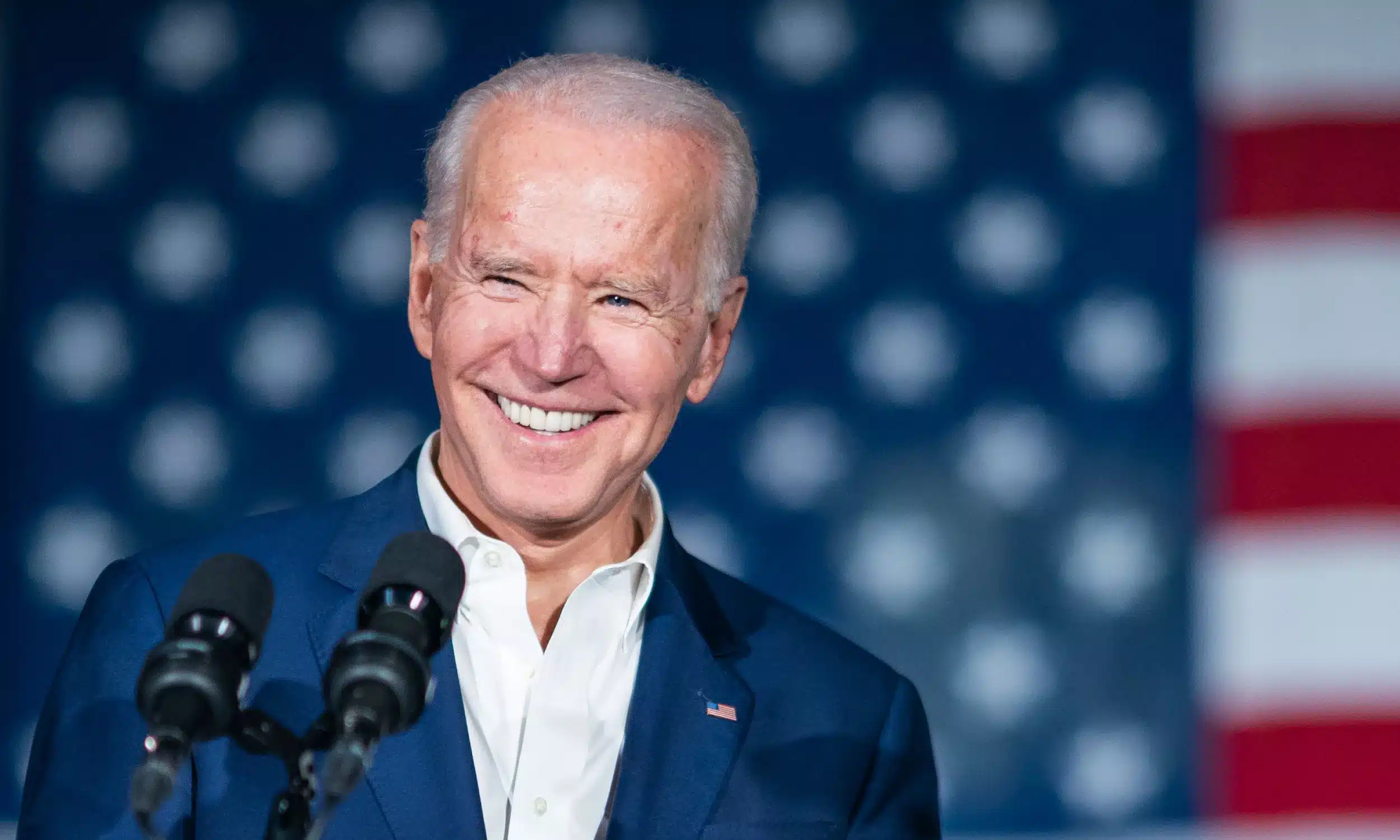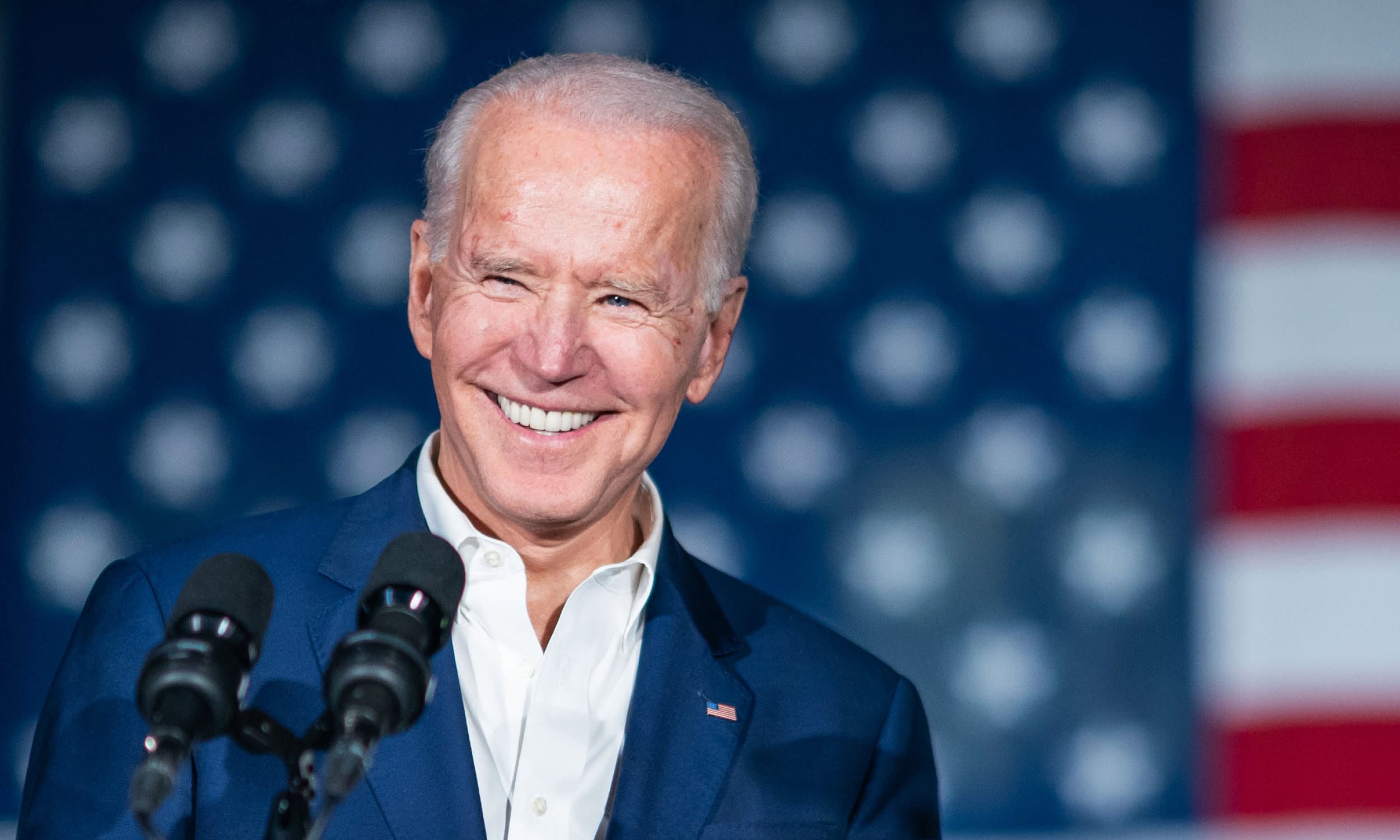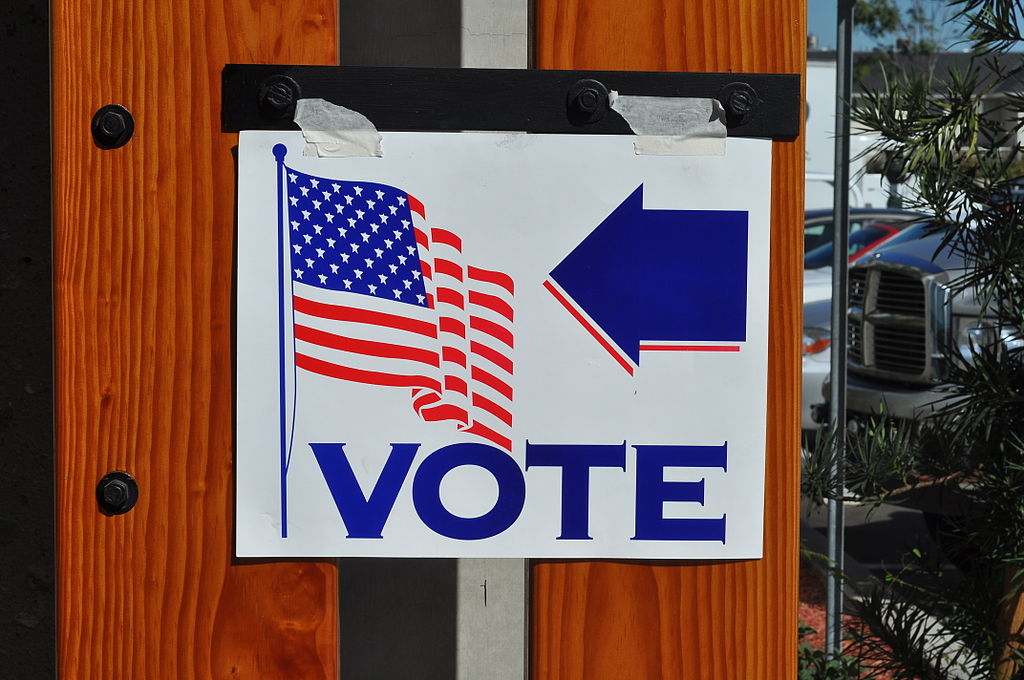Mississippi Today
Five things to know about the new drug pricing negotiations


The Biden administration has picked the first 10 high-priced prescription drugs subject to federal price negotiations, taking a swipe at the powerful pharmaceutical industry. It marks a major turning point in a long-fought battle to control ever-rising drug prices for seniors and, eventually, other Americans.
Under the 2022 Inflation Reduction Act, Congress gave the federal government the power to negotiate prices for certain high-cost drugs under Medicare. The list of drugs selected by the Centers for Medicare & Medicaid Services will grow over time.
The first eligible drugs treat diabetes, blood clots, blood cancers, arthritis, and heart disease — and accounted for about $50 billion in spending from June 2022 to May 2023.
The United States is clearly an outlier on drug costs, with drugmakers charging Americans many times more than residents of other countries “simply because they could,” Biden said Tuesday at the White House. “I think it’s outrageous. That’s why these negotiations matter.”
He added, “We’re going to keep standing up to Big Pharma and we’re not going to back down.”
Democratic lawmakers cheered the announcement, and the pharmaceutical industry, which has filed a raft of lawsuits against the law, condemned it.
The companies have until Oct. 2 to present data on their drugs to CMS, which will make initial price offers in February, setting off negotiations set to end next August. The prices would go into effect in January 2026.
Here are five things to know about the impact:
1. How important is this step?
Medicare has long been in control of the prices for its services, setting physician payments and hospital payments for about 65 million Medicare beneficiaries. But it was previously prohibited from involvement in pricing prescription drugs, which it started covering in 2006.
Until now the drug industry has successfully fought off price negotiations with Washington, although in most of the rest of the world governments set prices for medicines. While the first 10 drugs selected for negotiations are used by a minority of patients — 9 million — CMS plans by 2029 to have negotiated prices for 50 drugs on the market.
“There’s a symbolic impact, but also Medicare spent $50 billion on these 10 drugs in a 12-month period. That’s a lot of money,” said Juliette Cubanski, deputy director of KFF’s analysis of Medicare policy.
The long-term consequences of the new policy are unknown, said Alice Chen, vice dean for research at University of Southern California’s Sol Price School of Public Policy. The drug industry says the negotiations are essentially price controls that will stifle drug development, but the Congressional Budget Office estimated only a few drugs would not be developed each year as a result of the policy.
Biden administration officials say reining in drug prices is key to slowing the skyrocketing costs of U.S. health care.
2. How will the negotiations affect Medicare patients?
In some cases, patients may save a lot of money, but the main thrust of Medicare price negotiation policy is to provide savings to the Medicare program — and taxpayers — by lowering its overall costs.
The drugs selected by CMS range from specialized, hyper-expensive drugs like the cancer pill Imbruvica (used by about 26,000 patients in 2021 at an annual price of $121,000 per patient) to extremely common medications such as Eliquis (a blood thinner for which Medicare paid about $4,000 each for 3.1 million patients).
While the negotiations could help patients whose Medicare drug plans require them to make large copayments for drugs, the relief for patients will come from another segment of the Inflation Reduction Act that caps drug spending by Medicare recipients at $2,000 per year starting in 2025.
3. What do the Medicare price negotiations mean for those not on Medicare?
One theory is that reducing the prices drug companies can charge in Medicare will lead them to increase prices for the privately insured.
But that would be true only if companies aren’t already pricing their drugs as high as the private market will bear, said Tricia Neuman, executive director of KFF’s program on Medicare policy.
Another theory is that Medicare price negotiations will equip private health plans to drive a harder bargain. David Mitchell, president of the advocacy group Patients for Affordable Drugs, predicted that disclosure of negotiated Medicare prices “will embolden and arm private sector negotiators to seek that lower price for those they cover.”
Stacie B. Dusetzina, a professor of health policy at Vanderbilt University, said the effect on pricing outside Medicare isn’t clear.
“I’d hedge my bet that it doesn’t change,” she said.
Nonetheless, Dusetzina described one way it could: Because the government will be selecting drugs for Medicare negotiations based partly on the listed gross prices for the drugs — distinct from the net cost after rebates are taken into account — the process could give drug companies an incentive to lower the list prices and narrow the gap between gross and net. That could benefit people outside Medicare whose out-of-pocket payments are pegged to the list prices, she said.
4. What are drug companies doing to stop this?
Even though negotiated prices won’t take effect until 2026, drug companies haven’t wasted time turning to the courts to try to stop the new program in its tracks.
At least six drug companies have filed lawsuits to halt the Medicare drug negotiation program, as have the U.S. Chamber of Commerce and the Pharmaceutical Research and Manufacturers of America, known as PhRMA.
The lawsuits include a variety of legal arguments. Merck & Co., Johnson & Johnson, and Bristol Myers Squibb are among the companies arguing their First Amendment rights are being violated because the program would force them to make statements on negotiated prices they believe are untrue. Lawsuits also say the program unconstitutionally coerces drugmakers into selling their products at inadequate prices.
“It is akin to the Government taking your car on terms that you would never voluntarily accept and threatening to also take your house if you do not ‘agree’ that the taking was ‘fair,’” Janssen, part of Johnson & Johnson, wrote in its lawsuit.
Nicholas Bagley, a law professor at the University of Michigan, predicted the lawsuits would fail because Medicare is a voluntary program for drug companies, and those wishing to participate must abide by its rules.
5. What if a drug suddenly gets cheaper by 2026?
In theory, it could happen. Under guidelines CMS issued this year, the agency will cancel or adjourn negotiations on any drug on its list if a cheaper copycat version enters the market and finds substantial buyers.
According to company statements this year, two biosimilar versions of Stelara, a Johnson & Johnson drug on the list, are prepared to launch in early 2025. If they succeed, it would presumably scotch CMS’ plan to demand a lower price for Stelara.
Other drugs on the list have managed to maintain exclusive rights for decades. For example, Enbrel, which the FDA first approved in 1998 and cost Medicare $1.5 billion in 2021, will not face competition until 2029 at the earliest.
KFF Health News is a national newsroom that produces in-depth journalism about health issues and is one of the core operating programs at KFF—an independent source of health policy research, polling, and journalism. Learn more about KFF.
This article first appeared on Mississippi Today and is republished here under a Creative Commons license.
Mississippi Today
Speaker White wants Christmas tree projects bill included in special legislative session

House Speaker Jason White sent a terse letter to Lt. Gov. Delbert Hosemann on Thursday, saying House leaders are frustrated with Senate leaders refusing to discuss a “Christmas tree” bill spending millions on special projects across the state.
The letter signals the two Republican leaders remain far apart on setting an overall $7 billion state budget. Bickering between the GOP leaders led to a stalemate and lawmakers ending their regular 2025 session without setting a budget. Gov. Tate Reeves plans to call them back into special session before the new budget year starts July 1 to avoid a shutdown, but wants them to have a budget mostly worked out before he does so.
White’s letter to Hosemann, which contains words in all capital letters that are underlined and italicized, said that the House wants to spend cash reserves on projects for state agencies, local communities, universities, colleges, and the Mississippi Department of Transportation.
“We believe the Senate position to NOT fund any local infrastructure projects is unreasonable,” White wrote.
The speaker in his letter noted that he and Hosemann had a meeting with the governor on Tuesday. Reeves, according to the letter, advised the two legislative leaders that if they couldn’t reach an agreement on how to disburse the surplus money, referred to as capital expense money, they should not spend any of it on infrastructure.
A spokesperson for Hosemann said the lieutenant governor has not yet reviewed the letter, and he was out of the office on Thursday working with a state agency.
“He is attending Good Friday services today, and will address any correspondence after the celebration of Easter,” the spokesperson said.
Hosemann has recently said the Legislature should set an austere budget in light of federal spending cuts coming from the Trump administration, and because state lawmakers this year passed a measure to eliminate the state income tax, the source of nearly a third of the state’s operating revenue.
Lawmakers spend capital expense money for multiple purposes, but the bulk of it — typically $200 million to $400 million a year — goes toward local projects, known as the Christmas Tree bill. Lawmakers jockey for a share of the spending for their home districts, in a process that has been called a political spoils system — areas with the most powerful lawmakers often get the largest share, not areas with the most needs. Legislative leaders often use the projects bill as either a carrot or stick to garner votes from rank and file legislators on other issues.
A Mississippi Today investigation last year revealed House Ways and Means Chairman Trey Lamar, a Republican from Sentobia, has steered tens of millions of dollars in Christmas tree spending to his district, including money to rebuild a road that runs by his north Mississippi home, renovate a nearby private country club golf course and to rebuild a tiny cul-de-sac that runs by a home he has in Jackson.
There is little oversight on how these funds are spent, and there is no requirement that lawmakers disburse the money in an equal manner or based on communities’ needs.
In the past, lawmakers borrowed money for Christmas tree bills. But state coffers have been full in recent years largely from federal pandemic aid spending, so the state has been spending its excess cash. White in his letter said the state has “ample funds” for a special projects bill.
“We, in the House, would like to sit down and have an agreement with our Senate counterparts on state agency Capital Expenditure spending AND local projects spending,” White wrote. “It is extremely important to our agencies and local governments. The ball is in your court, and the House awaits your response.”
This article first appeared on Mississippi Today and is republished here under a Creative Commons Attribution-NoDerivatives 4.0 International License.
Mississippi Today
Advocate: Election is the chance for Jackson to finally launch in the spirit of Blue Origin

Editor’s note: This essay is part of Mississippi Today Ideas, a platform for thoughtful Mississippians to share fact-based ideas about our state’s past, present and future. You can read more about the section here.
As the world recently watched the successful return of Blue Origin’s historic all-women crew from space, Jackson stands grounded. The city is still grappling with problems that no rocket can solve.
But the spirit of that mission — unity, courage and collective effort — can be applied right here in our capital city. Instead of launching away, it is time to launch together toward a more just, functioning and thriving Jackson.
The upcoming mayoral runoff election on April 22 provides such an opportunity, not just for a new administration, but for a new mindset. This isn’t about endorsements. It’s about engagement.
It’s a moment for the people of Jackson and Hinds County to take a long, honest look at ourselves and ask if we have shown up for our city and worked with elected officials, instead of remaining at odds with them.
It is time to vote again — this time with deeper understanding and shared responsibility. Jackson is in crisis — and crisis won’t wait.
According to the U.S. Census projections, Jackson is the fastest-shrinking city in the United States, losing nearly 4,000 residents in a single year. That kind of loss isn’t just about numbers. It’s about hope, resources, and people’s decision to give up rather than dig in.
Add to that the long-standing issues: a crippled water system, public safety concerns, economic decline and a sense of division that often pits neighbor against neighbor, party against party and race against race.
Mayor Chokwe Antar Lumumba has led through these storms, facing criticism for his handling of the water crisis, staffing issues and infrastructure delays. But did officials from the city, the county and the state truly collaborate with him or did they stand at a distance, waiting to assign blame?
On the flip side, his runoff opponent, state Sen. John Horhn, who has served for more than three decades, is now seeking to lead the very city he has represented from the Capitol. Voters should examine his legislative record and ask whether he used his influence to help stabilize the administration or only to position himself for this moment.
Blaming politicians is easy. Building cities is hard. And yet that is exactly what’s needed. Jackson’s future will not be secured by a mayor alone. It will take so many of Jackson’s residents — voters, business owners, faith leaders, students, retirees, parents and young people — to move this city forward. That’s the liftoff we need.
It is time to imagine Jackson as a capital city where clean, safe drinking water flows to every home — not just after lawsuits or emergencies, but through proactive maintenance and funding from city, state and federal partnerships. The involvement of the U.S. Environmental Protection Agency in the effort to improve the water system gives the city leverage.
Public safety must be a guarantee and includes prevention, not just response, with funding for community-based violence interruption programs, trauma services, youth job programs and reentry support. Other cities have done this and it’s working.
Education and workforce development are real priorities, preparing young people not just for diplomas but for meaningful careers. That means investing in public schools and in partnerships with HBCUs, trade programs and businesses rooted right here.
Additionally, city services — from trash collection to pothole repair — must be reliable, transparent and equitable, regardless of zip code or income. Seamless governance is possible when everyone is at the table.
Yes, democracy works because people show up. Not just to vote once, but to attend city council meetings, serve on boards, hold leaders accountable and help shape decisions about where resources go.
This election isn’t just about who gets the title of mayor. It’s about whether Jackson gets another chance at becoming the capital city Mississippi deserves — a place that leads by example and doesn’t lag behind.
The successful Blue Origin mission didn’t happen by chance. It took coordinated effort, diverse expertise and belief in what was possible. The same is true for this city.
We are not launching into space. But we can launch a new era marked by cooperation over conflict, and by sustained civic action over short-term outrage.
On April 22, go vote. Vote not just for a person, but for a path forward because Jackson deserves liftoff. It starts with us.
Pauline Rogers is a longtime advocate for criminal justice reform and the founder of the RECH Foundation, an organization dedicated to supporting formerly incarcerated individuals as they reintegrate into society. She is a Transformative Justice Fellow through The OpEd Project Public Voices Fellowship.
This article first appeared on Mississippi Today and is republished here under a Creative Commons Attribution-NoDerivatives 4.0 International License.![]()
Mississippi Today
On this day in 1959, students marched for integrated schools

April 18, 1959

About 26,000 students took part in the Youth March for Integrated Schools in Washington, D.C. They heard speeches by Martin Luther King Jr., A. Phillip Randolph and NAACP leader Roy Wilkins.
In advance of the march, false accusations were made that Communists had infiltrated the group. In response, the civil rights leaders put out a statement: “The sponsors of the March have not invited Communists or communist organizations. Nor have they invited members of the Ku Klux Klan or the White Citizens’ Council. We do not want the participation of these groups, nor of individuals or other organizations holding similar views.”
After the march, a delegation of students went to present their demands to President Eisenhower, only to be told by his deputy assistant that “the president is just as anxious as they are to see an America where discrimination does not exist, where equality of opportunity is available to all.”
King praised the students, saying, “In your great movement to organize a march for integrated schools, you have awakened on hundreds of campuses throughout the land a new spirit of social inquiry to the benefit of all Americans.”
This article first appeared on Mississippi Today and is republished here under a Creative Commons Attribution-NoDerivatives 4.0 International License.![]()
-

 Mississippi Today6 days ago
Mississippi Today6 days agoLawmakers used to fail passing a budget over policy disagreement. This year, they failed over childish bickering.
-

 Mississippi Today6 days ago
Mississippi Today6 days agoOn this day in 1873, La. courthouse scene of racial carnage
-

 Local News7 days ago
Local News7 days agoAG Fitch and Children’s Advocacy Centers of Mississippi Announce Statewide Protocol for Child Abuse Response
-

 Local News6 days ago
Local News6 days agoSouthern Miss Professor Inducted into U.S. Hydrographer Hall of Fame
-

 News from the South - Alabama News Feed4 days ago
News from the South - Alabama News Feed4 days agoFoley man wins Race to the Finish as Kyle Larson gets first win of 2025 Xfinity Series at Bristol
-

 Our Mississippi Home7 days ago
Our Mississippi Home7 days agoFood Chain Drama | Our Mississippi Home
-

 News from the South - North Carolina News Feed7 days ago
News from the South - North Carolina News Feed7 days agoHelene: Renewed focus on health of North Carolina streams | North Carolina
-

 News from the South - Alabama News Feed5 days ago
News from the South - Alabama News Feed5 days agoFederal appeals court upholds ruling against Alabama panhandling laws


















































